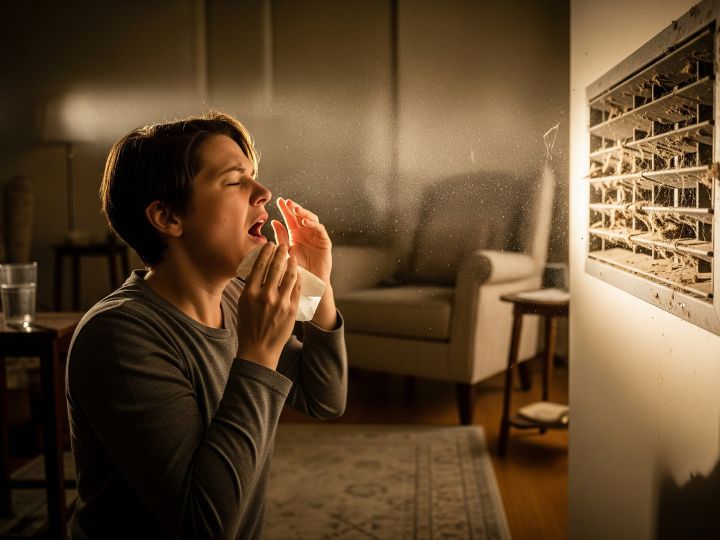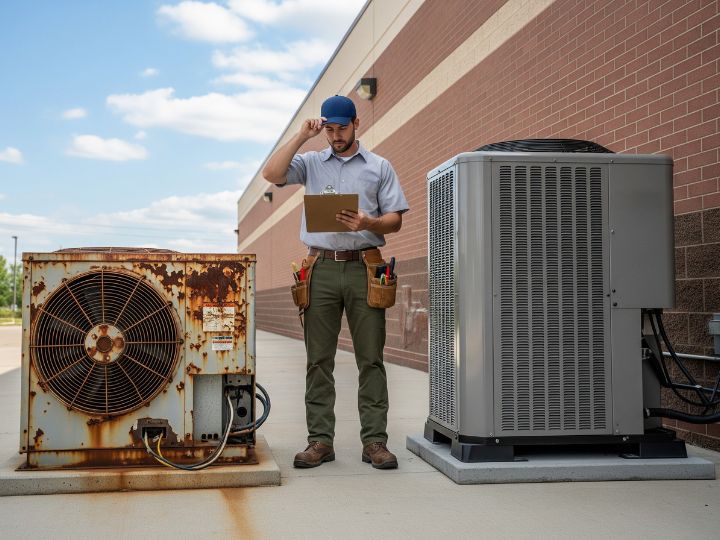Table of Contents
An HVAC inspection after flood is essential to identify water damage, prevent mold growth, and ensure system safety and efficiency, protecting your home’s air quality and avoiding costly repairs.
Key Takeaways:
- Detect hidden water damage early
- Prevent mold and health risks
- Ensure HVAC system safety
- Maintain energy efficiency
- Avoid expensive future repairs
Flooding is one of the most destructive forces a home or commercial building can face. Beyond visible damage to walls, floors, and furniture, floodwater can wreak havoc on hidden systems—especially your heating, ventilation, and air conditioning (HVAC) equipment. Conducting a thorough post-flood HVAC inspection is not just a precaution—it is an absolute necessity for safety, efficiency, and long-term cost savings.
Understanding the Impact of Floodwater on HVAC Systems
Floodwater contains more than just water—it often carries dirt, debris, chemicals, and harmful microorganisms. When it infiltrates your HVAC system, these contaminants can compromise air quality, damage mechanical components, and pose serious health hazards.
- Electrical Damage – Moisture can corrode wiring, short-circuit motors, and damage control boards.
- Corrosion of Metal Components – Floodwater accelerates rusting in heat exchangers, ducts, and coil systems.
- Contamination Risks – Mold, bacteria, and other pathogens can develop inside ducts and vents, circulating through the indoor environment.
- Loss of Efficiency – Dirt and sediment buildup in fans, compressors, and coils reduce airflow and system performance.
Recommended Frequency for HVAC Inspections

After flooding, an uninspected HVAC system can become a breeding ground for mold and bacteria. In particular, mold in HVAC systems after flood events is a serious concern, as it can quickly spread throughout a building via air ducts. According to the EPA’s mold and moisture guidelines, mold can develop in as little as 24–48 hours after water exposure, posing significant health risks.
When these pollutants are blown into your living or working spaces, they can cause:
- Respiratory issues such as asthma, allergies, and chronic cough.
- Skin irritations from contact with contaminated air or surfaces.
- Infections due to the spread of airborne pathogens.
Additionally, damaged electrical components can cause short circuits, fires, or electrocution hazards, making immediate inspection a matter of safety.
Key Steps in a Post-Flood HVAC Inspection
A professional HVAC inspection after flooding is a multi-step process designed to ensure your system is safe, clean, and fully functional.
1. Power Disconnection and Safety Assessment
Technicians first cut power and assess structural integrity, ensuring safety from electrocution and evaluating the extent of water exposure to system components.
2. Visual Damage Evaluation
They examine the HVAC system for rust, debris, insulation cracks, and sediment buildup that could impair function or signal deeper flood-related damage.
3. Electrical Component Testing
All electrical parts, including motors and circuit boards, are tested to detect malfunctions, shorts, or corrosion caused by water infiltration and moisture exposure.
4. Mechanical and Moving Part Assessment
Technicians inspect fans, bearings, belts, and compressors for rust, wear, or misalignment, ensuring these moving parts remain functional after flood exposure.
5. Air Duct and Ventilation Cleaning
Floodwater can carry mold and bacteria; ducts must be cleaned or replaced to restore indoor air quality and prevent health risks from contamination.
6. Refrigerant System Inspection
They check refrigerant pressure, coil cleanliness, and for any leaks to ensure the system cools efficiently and hasn’t been compromised by flood sediment.
Why Immediate Action Matters
Delaying an HVAC inspection after flooding can multiply problems:
- Mold can spread within 24–48 hours after water exposure.
- Electrical components can corrode quickly, leading to costly replacements.
- Prolonged exposure to contaminants can make a property uninhabitable.
- Moisture trapped in ductwork can reduce HVAC efficiency, increasing energy bills.
- Early detection of hidden damage prevents health risks caused by poor indoor air quality.
Prolonged exposure to airborne mold and contaminants can degrade indoor air quality and trigger respiratory issues, especially in sensitive individuals. The American Lung Association outlines how indoor pollutants, like those from mold, impact respiratory health.
Swift inspection ensures that minor repairs don’t escalate into full system replacements.
Repair vs. Replacement: Making the Right Decision
Post-flood inspection results will determine whether your system can be salvaged or must be replaced. Factors include:
- Depth and duration of water exposure
- Age of the unit – Older systems may not justify costly repairs.
- Extent of contamination – Severe mold or chemical infiltration may require full replacement.
- Cost-effectiveness – Sometimes, replacing it with a modern, energy-efficient model offers better long-term value.
Availability of replacement parts – Older or discontinued models may be difficult or expensive to repair.

Preventive Measures to Protect Your HVAC from Future Flooding
While you cannot always prevent flooding, you can minimize damage to your HVAC system with strategic prevention measures:
- Elevate outdoor units above known flood levels.
- Install flood barriers or enclosures for ground-level systems.
- Seal ductwork in flood-prone basements or crawl spaces.
Schedule regular HVAC maintenance service to keep systems resilient against water damage.
The Importance of Professional Expertise
Flood damage requires specialized care, making professional HVAC services essential. Certified technicians have the skills, tools, and experience to properly inspect, clean, and restore systems after water exposure. They adhere to EPA and industry guidelines to handle contaminated components, ensuring your system is safe, efficient, and compliant with health standards.
- Accurate assessment of damage
- Safe removal of contaminants
- Compliance with health and safety regulations
- Restoration for optimal system performance
- Prevention of long-term HVAC issues
Call the Experts: Trusted Help for Post-Flood HVAC Inspection
When your HVAC system is exposed to flooding, don’t take chances—call HVAC Alliance Experts, your trusted provider for professional HVAC maintenance and repair. Their certified technicians specialize in post-flood inspections and restorations.
Why choose HVAC Alliance Experts?
- Fully licensed and insured professionals
- 24/7 emergency services available
- EPA-compliant flood remediation practices
- Transparent pricing and expert advice
Don’t wait—early action saves money and ensures safety.
Conclusion
A post-flood HVAC inspection is not optional—it is critical to ensuring safe air quality, preventing long-term system damage, and protecting the health of everyone in your home or business. Hidden moisture and contaminants can silently wreak havoc on your HVAC system, leading to costly repairs, reduced efficiency, and dangerous mold growth.
By acting quickly and calling trusted professionals from HVAC Alliance Experts, you can restore comfort, efficiency, and safety to your property. Don’t risk your health or finances—schedule your post-flood HVAC inspection today.
FAQs
Floodwater can cause hidden electrical damage, mold growth, and contamination within hours. Immediate inspection helps prevent health risks and reduces costly repairs.
No, running a flood-exposed system can circulate harmful contaminants and cause electrical hazards. Always have it inspected before use to ensure safety
Contaminated HVAC systems can spread mold, bacteria, and allergens through your indoor air. This can trigger respiratory problems, skin irritation, and even infections.
Not necessarily—if the damage is minor and components are salvageable, repairs may be enough. However, severe contamination or corrosion often requires full replacement.
Raising outdoor units, sealing ductwork, and installing flood barriers can reduce risk. Regular maintenance also ensures your system is better prepared for emergencies.


